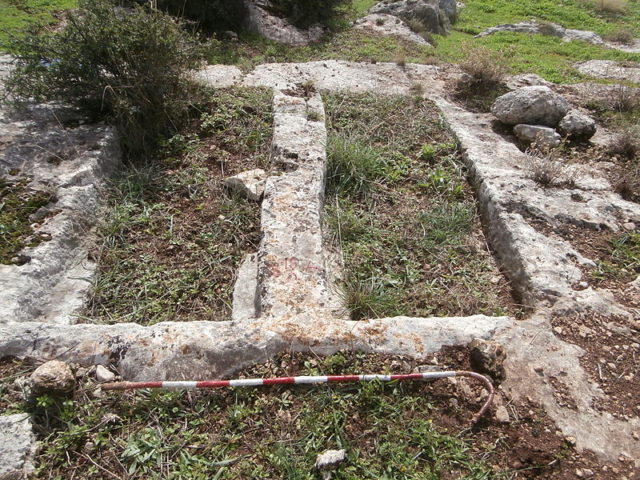In 2012, Professor Jodi Magness of the University of North Carolina at Chapel Hill and Shua Kisilevitz of the Israel Antiquities Authority began the Huqoq Excavation Project on a 5th-century Roman synagogue in Galilee, Israel.
The area of the present-day dig was frequently fought over during the Crusades in the 12th and 13th century, and it changed hands multiple times until 1303. Originally, Huqoq was a busy village in the Late Roman and Byzantine periods, probably because natural springs in the area allowed agriculture to flourish. As of yet, there has been nothing found to indicate the presence of Jews in available records, other than a brief mention of Ishtori Haparchi, a 14th-century traveler who mentioned a synagogue which had an old floor.

Due to the unique setup of the interior, researchers believe that they have found that synagogue. They agree that a much larger building was constructed over the ruins of the 5th-century Roman building. The newer construction preserved aspects of the original structure, including colorful, well-preserved mosaics depicting stories from the Bible. Magness reports that the finding is very rare and that only a few have been found in Jordan, Turkey, Syria, and Khirbet Wadi Hamam, Isreal.
Scenes depict stories of Noah’s Ark and the parting of the Red Sea. One shows Moses opening a path through the Red Sea so the former Hebrew slaves could escape Pharaoh’s wrath; Egyptian soldiers can be seen being swallowed by sea creatures, while horses and empty chariots are floating about. The Ark scenes show pairs of animals such as lions, elephants, goats, and camels.
During the excavations in the summer of 2012, another scene was uncovered of Judges 15:4, the Biblical depiction of Sampson tying the tails of three hundred foxes to torches and then releasing them to burn Philistine grain fields. The following summer other scenes were discovered, including Samson carrying the Gaza gates on his shoulders, as well as depictions of mythical creatures, humans, and animals, along with Hebrew writings that speak of rewards for good deeds.

Researchers have also found mosaics of Alexander the Great in a conference with a Jewish high priest, pictures of the Maccabean revolt, and the first secular mosaics ever found – depictions of war. For the first time, iPads are being used to record the findings as they are uncovered; technology sends the information directly to a computer database, making interpretation of the data easier and quicker than in the past. It also allows archaeologists to view artifacts in three-dimensional images on computer screens. Previously, data was recorded on stacks of paper and had to be entered into computers manually.
While many archaeologists in authoritative positions tend to release information as it comes out, Magness prefers to wait until the data has been analyzed, and then writes articles for archaeological publications as well as press releases. Her staff is building a website featuring the dig, which will make it much easier for her to publish information, Mail Online reported.

All of the discovered mosaics have been removed and taken elsewhere to be preserved. The work is being financed by the University of North Carolina at Chapel Hill, Brigham Young University, the University of Toronto, the National Geographic Society Expeditions Council, Waitt Grants Program, the Foundation for Biblical Archaeology, the Loeb Classical Library Foundation, and private donations.
Glimpses of more mosaics have been seen just outside of the presently-excavated sections, and these will be unearthed in the summer of 2017. Unfortunately, the site has to be backfilled at the end of each season to preserve the remaining artifacts to be found.The excavation at the site is a lengthy process, especially at the beginning of each season.
